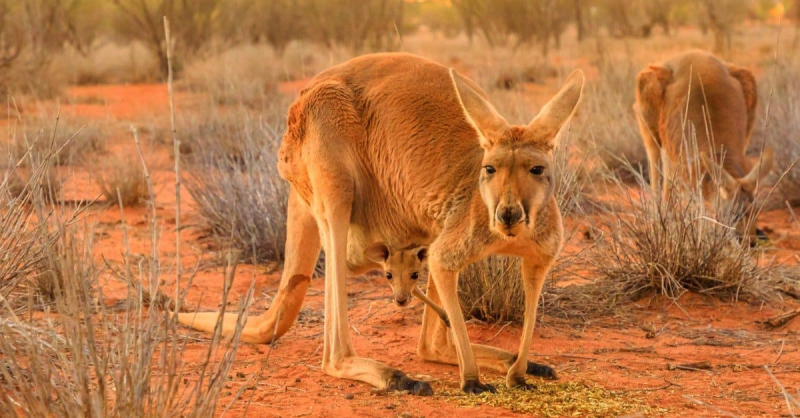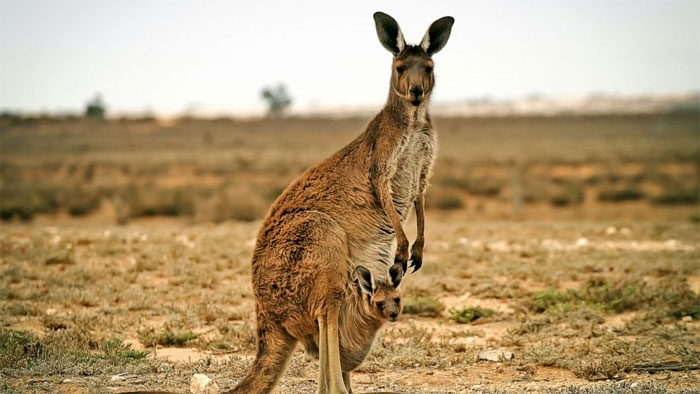Kangaroo

Kangaroos are the biggest of the Macropodidae family's four members. They are marsupials with two stomach chambers that are endemic to Australia and New Guinea. Kangaroos are herbivores who prefer to feed on grass and plants. Kangaroos, like cows, have two stomach chambers: sacciform and tubiform. The bacteria, fungus, and protozoa in the sack-like anterior chamber start the fermentation process required for kangaroo digestion. Food can stay in this area of the stomach for several hours before fermentation starts. The kangaroo, like a cow chewing cud, may spit out undigested food to be chewed and eaten again. As food ferments, it enters the second stomach chamber of the kangaroo, where acids and enzymes complete digestion. They regurgitate food and chew it again, but because chewing the cud is more difficult for them, they do not chew it as often as ruminants.
Kangaroos are immediately identified by their unique hopping motion, which is enabled by their muscular rear legs and long tail. The biggest kangaroos may grow to be 8 feet tall and achieve a peak speed of 43 mph. Wrestling with each other and balancing on their tails while kicking each other in the belly with their rear legs is how males "box." Many of kangaroos' natural predators are now gone, although dingos, eagles, and goannas are still around.
Digestive System : Two Stomach Chambers











